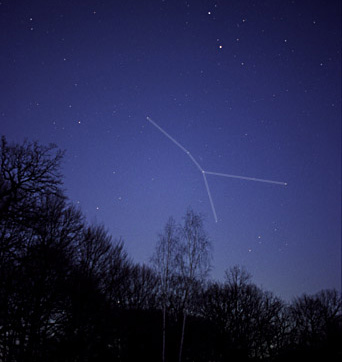|
Ashlesha (nakshatra)
Ashlesha (Sanskrit: आश्लेषा or ''Āśleṣā'') (Tibetan: སྐར་མ་སྐག), also known as Ayilyam in Tamil and Malayalam (Tamil: ஆயில்யம், Malayalam: ആയില്യം, ''Āyilyaṃ''), is the 8th of the 27 nakshatras in Hindu astrology. Ashlesha is also known as the Clinging Star or Nāga. It is known as the Hydra. It extends from 16:40 to 30:00 Cancer . The planetary lord is Mercury or Budha. Its presiding deities are the Nāgas. The nakshatra's symbol is a coiled serpent. It is a ''trikshna'' or sharp nakshatra. Its animal symbol is the male cat. See also *List of Nakshatras In Hindu astronomy, there are 27 ''nakshatras'' , or sectors along the ecliptic. A list of them is first found in the ''Vedanga Jyotisha'', a text dated to the final centuries BCE. The ''Nakṣatra'' system predates the influence of Hellenistic ast ... References Nakshatra {{Hindu-myth-stub ... [...More Info...] [...Related Items...] OR: [Wikipedia] [Google] [Baidu] |
Tamil Language
Tamil (; ' , ) is a Dravidian language natively spoken by the Tamil people of South Asia. Tamil is an official language of the Indian state of Tamil Nadu, the sovereign nations of Sri Lanka and Singapore, and the Indian territory of Puducherry. Tamil is also spoken by significant minorities in the four other South Indian states of Kerala, Karnataka, Andhra Pradesh and Telangana, and the Union Territory of the Andaman and Nicobar Islands. It is also spoken by the Tamil diaspora found in many countries, including Malaysia, Myanmar, South Africa, United Kingdom, United States, Canada, Australia and Mauritius. Tamil is also natively spoken by Sri Lankan Moors. One of 22 scheduled languages in the Constitution of India, Tamil was the first to be classified as a classical language of India. Tamil is one of the longest-surviving classical languages of India.. "Tamil is one of the two longest-surviving classical languages in India" (p. 7). A. K. Ramanujan described it as "the on ... [...More Info...] [...Related Items...] OR: [Wikipedia] [Google] [Baidu] |
Malayalam
Malayalam (; , ) is a Dravidian language spoken in the Indian state of Kerala and the union territories of Lakshadweep and Puducherry (Mahé district) by the Malayali people. It is one of 22 scheduled languages of India. Malayalam was designated a "Classical Language of India" in 2013. Malayalam has official language status in Kerala, and Puducherry ( Mahé), and is also the primary spoken language of Lakshadweep, and is spoken by 34 million people in India. Malayalam is also spoken by linguistic minorities in the neighbouring states; with significant number of speakers in the Kodagu and Dakshina Kannada districts of Karnataka, and Kanyakumari, district of Tamil Nadu. It is also spoken by the Malayali Diaspora worldwide, especially in the Persian Gulf countries, due to large populations of Malayali expatriates there. There are significant population in each cities in India including Mumbai, Bengaluru, Delhi, Kolkata, Pune etc. The origin of Malayalam remains a matter of ... [...More Info...] [...Related Items...] OR: [Wikipedia] [Google] [Baidu] |
Nakshatra
Nakshatra ( sa, नक्षत्रम्, translit=Nakṣatram) is the term for lunar mansion in Hindu astrology and Indian Astronomy. A nakshatra is one of 27 (sometimes also 28) sectors along the ecliptic. Their names are related to a prominent star or asterisms in or near the respective sectors. The starting point for the nakshatras according to Vedas is "Krittika" (it has been argued because the Pleiades may have started the year at the time the Vedas were compiled, presumably at the vernal equinox), but, in more recent compilations, the start of the nakshatras list is the point on the ecliptic directly opposite to the star Spica called ''Chitrā'' in Sanskrit, which would be Ashwinī, a part of the modern constellation Aries, and these compilations therefore may have been compiled during the centuries when the sun was passing through the area of the constellation Aries at the time of the vernal equinox. This version may have been called ''Meshādi'' or the " start ... [...More Info...] [...Related Items...] OR: [Wikipedia] [Google] [Baidu] |
Hindu Astrology
Jyotisha or Jyotishya (from Sanskrit ', from ' “light, heavenly body" and ''ish'' - from Isvara or God) is the traditional Hindu system of astrology, also known as Hindu astrology, Indian astrology and more recently Vedic astrology. It is one of the six auxiliary disciplines in Hinduism, that is connected with the study of the Vedas. The ''Vedanga Jyotisha'' is one of the earliest texts about astronomy within the Vedas. Some scholars believe that the horoscopic astrology practiced in the Indian subcontinent came from Hellenistic influences, however, this is a point of intense debate and other scholars believe that Jyotisha developed independently although it may have interacted with Greek astrology. Following a judgement of the Andhra Pradesh High Court in 2001 which favoured astrology, some Indian universities now offer advanced degrees in Hindu astrology. The scientific consensus is that astrology is a pseudoscience. Etymology Jyotisha, states Monier-Williams, is rooted in ... [...More Info...] [...Related Items...] OR: [Wikipedia] [Google] [Baidu] |
Nāga
The Nagas (IAST: ''nāga''; Devanāgarī: नाग) are a divine, or semi-divine, race of half-human, half-serpent beings that reside in the netherworld (Patala), and can occasionally take human or part-human form, or are so depicted in art. A female naga is called a Nagi, or a Nagini. According to legend, they are the children of the sage Kashyapa and Kadru. Rituals devoted to these supernatural beings have been taking place throughout South Asia for at least 2,000 years. They are principally depicted in three forms: as entirely human with snakes on the heads and necks, as common serpents, or as half-human, half-snake beings in Hinduism, Buddhism, and Jainism. ''Nagaraja'' is the title given to the king of the nagas. Narratives of these beings hold cultural significance in the mythological traditions of many South Asian and Southeast Asian cultures, and within Hinduism and Buddhism, they are the ancestral origins of the Nagavanshi Kshatriyas. Etymology In Sanskrit, a () ... [...More Info...] [...Related Items...] OR: [Wikipedia] [Google] [Baidu] |
Lernaean Hydra
The Lernaean Hydra or Hydra of Lerna ( grc-gre, Λερναῖα Ὕδρα, ''Lernaîa Hýdra''), more often known simply as the Hydra, is a serpentine water monster in Greek and Roman mythology. Its lair was the lake of Lerna in the Argolid, which was also the site of the myth of the Danaïdes. Lerna was reputed to be an entrance to the Underworld, and archaeology has established it as a sacred site older than Mycenaean Argos. In the canonical Hydra myth, the monster is killed by Heracles (Hercules) as the second of his Twelve Labors. According to Hesiod, the Hydra was the offspring of Typhon and Echidna. It had poisonous breath and blood so virulent that even its scent was deadly. The Hydra possessed many heads, the exact number of which varies according to the source. Later versions of the Hydra story add a regeneration feature to the monster: for every head chopped off, the Hydra would regrow two heads. Heracles required the assistance of his nephew Iolaus to cut off all of ... [...More Info...] [...Related Items...] OR: [Wikipedia] [Google] [Baidu] |
Cancer (constellation)
Cancer is one of the twelve constellations of the zodiac and is located in the Northern celestial hemisphere. Its old astronomical symbol is (♋︎). Its name is Latin for crab and it is commonly represented as one. Cancer is a medium-size constellation with an area of 506 square degrees and its stars are rather faint, its brightest star Beta Cancri having an apparent magnitude of 3.5. It contains two stars with known planets, including 55 Cancri, which has five: one super-earth and four gas giants, one of which is in the habitable zone and as such has expected temperatures similar to Earth. At the (angular) heart of this sector of our celestial sphere is Praesepe (Messier 44), one of the closest open clusters to Earth and a popular target for amateur astronomers. Characteristics Cancer is a medium-sized constellation that is bordered by Gemini to the west, Lynx to the north, Leo Minor to the northeast, Leo to the east, Hydra to the south, and Canis Minor to the southwe ... [...More Info...] [...Related Items...] OR: [Wikipedia] [Google] [Baidu] |
Mercury (astrology)
In astrology, planets have a meaning different from the astronomical understanding of what a planet is. Before the age of telescopes, the night sky was thought to consist of two very similar components: fixed stars, which remained motionless in relation to each other, and moving objects/" wandering stars" ( grc, ἀστέρες πλανῆται, asteres planetai), which moved relative to the fixed stars over the course of the year(s). To the Ancient Greeks who learned from the Babylonians - the earliest astronomers/astrologers - this group consisted of the five planets visible to the naked eye and excluded Earth, plus the Sun and Moon. Although the Greek term ''planet'' applied mostly to the five 'wandering stars', the Ancients included the Sun and Moon as the ''Sacred 7 Luminaires/7 Heavens'' (sometimes referred to as "Lights",) making a total of 7 planets. The ancient Babylonians, Greeks, Persians, Romans and others thought of the 7 Classical Planets as gods and named their ... [...More Info...] [...Related Items...] OR: [Wikipedia] [Google] [Baidu] |
Budha
Budha ( sa, बुध) is a Sanskrit word that connotes the planet Mercury. Budha, in Hindu legends, is also a deity. He is also known as Soumya (Sanskrit: सौम्य, lit. ''son of Moon''), Rauhineya and Tunga and is the Nakshatra lord of Ashlesha, Jyeshtha and Revati. Planet Budha as a planet appears in various Hindu astronomical texts in Sanskrit, such as the 5th century ''Aryabhatiya'' by Aryabhatta, the 6th century ''Romaka'' by Latadeva and ''Panca Siddhantika'' by Varahamihira, the 7th century ''Khandakhadyaka'' by Brahmagupta, and the 8th century ''Sisyadhivrddida'' by Lalla. These texts present Budha as one of the planets and estimate the characteristics of the respective planetary motion. Other texts such as ''Surya Siddhanta'' dated to have been complete sometime between the 5th century and 10th century present their chapters on various planets with deity mythologies. The manuscripts of these texts exist in slightly different versions, present B ... [...More Info...] [...Related Items...] OR: [Wikipedia] [Google] [Baidu] |
List Of Nakshatras
In Hindu astronomy, there are 27 ''nakshatras'' , or sectors along the ecliptic. A list of them is first found in the ''Vedanga Jyotisha'', a text dated to the final centuries BCE. The ''Nakṣatra'' system predates the influence of Hellenistic astronomy on Vedic tradition, which became prevalent from about the 2nd century CE. There are various systems of enumerating the ''Nakṣatra''-s; although there are 27-28 days to a sidereal month, by custom only 27 days are used. The following list gives the corresponding regions of sky. Names of the months in Indian national calendar is related to the names of Nakshatras. Padas (quarters) The 27 Nakshatras cover 13°20’ of the ecliptic each. Each Nakshatra is also divided into quarters or ''padas'' of 3°20’, and the below table lists the appropriate starting sound to name the child. The 27 nakshatras, each with 4 padas, give 108, which is the number of beads in a Japa mala, indicating all the elements (ansh) of Vishnu: Names in I ... [...More Info...] [...Related Items...] OR: [Wikipedia] [Google] [Baidu] |

.jpg)




